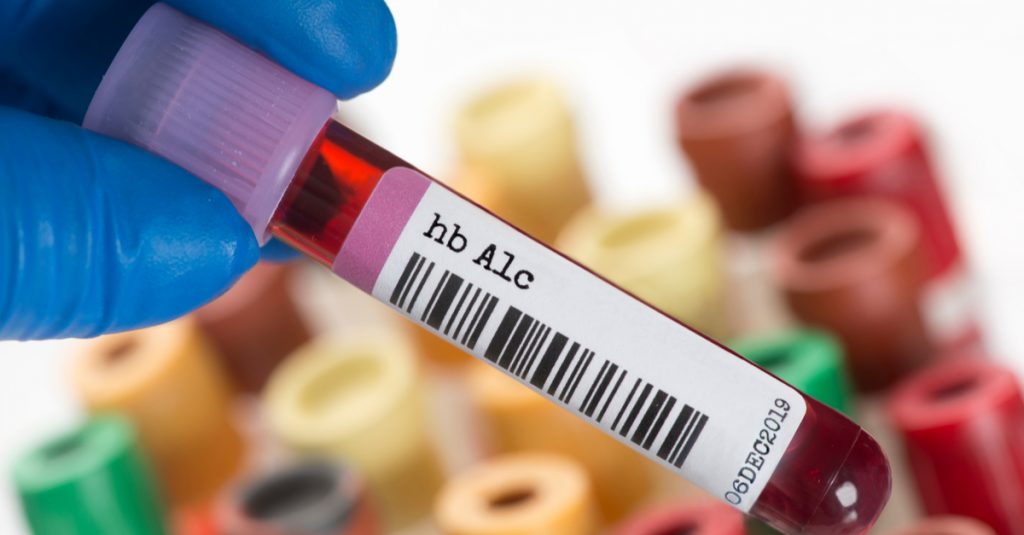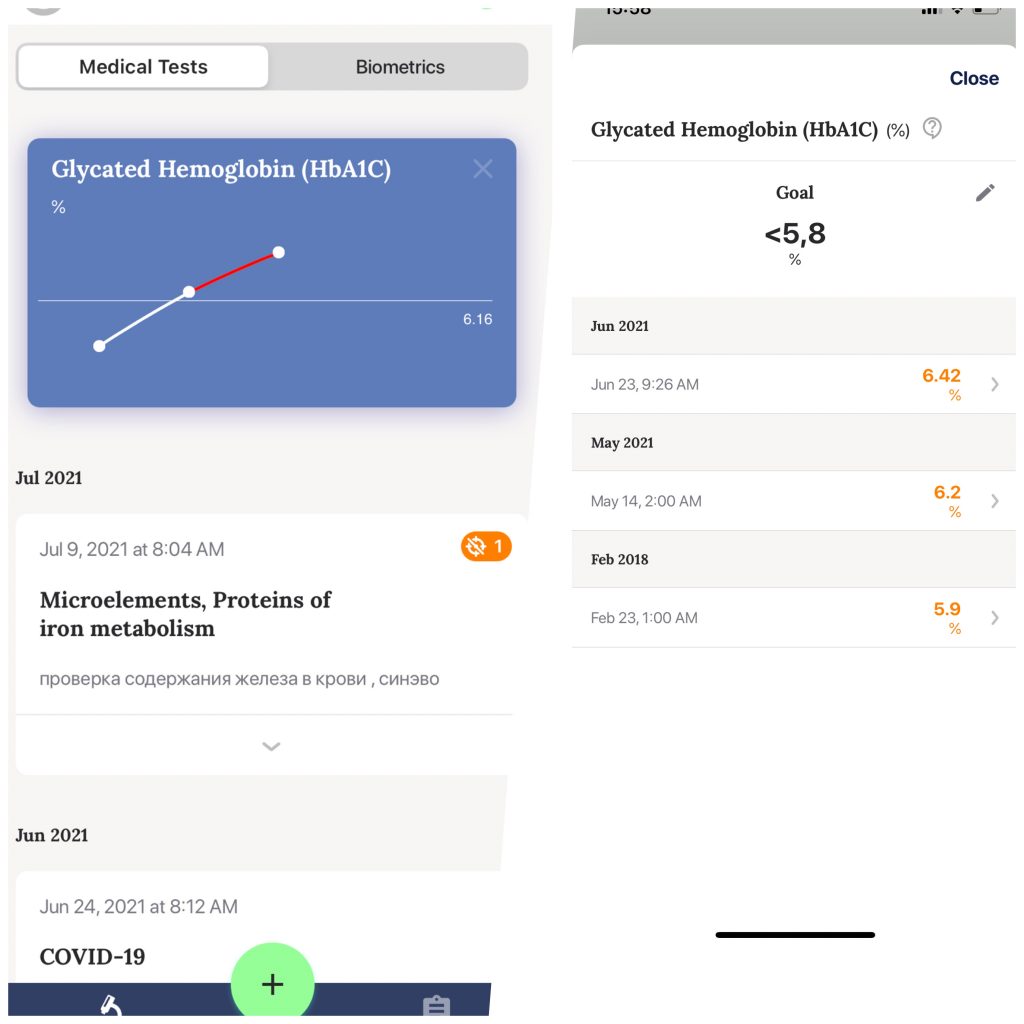How To Lower Your A1c Levels?

Diabetes is a major global health concern with a significant rise in prevalence. At the same time, glycated hemoglobin (A1C) helps to know how your body copes with sugar. For us, it’s an opportunity to detect a condition when the body is not functioning normally but it has not yet reached a state of disease. We’re talking about prediabetes. But for people with diabetes, this test is useful as well, mostly because it shows the risks of complications. In this article, we will talk about the situation when the test has already been done, and its results exceed healthy values. So, here you will find all about how to lower your a1c without medication.
This article was last reviewed by Svetlana Baloban, Healsens, on June 11, 2020. This article was last modified on 7 February 2020.
When talking about Normal Levels of Hemoglobin A1c we shall remember the following ranges. For diabetes-free people the normal range is between 4% and 5.6%. If your hemoglobin levels are 5.7% – 6.4%, the odds you will get diabetes are high. Levels of 6.5% or higher mean you have diabetes.
Decreasing Hemoglobin Goals
In the US, 79 million adults have prediabetes, a prevalence approximately 3 times that of diabetes.
Certainly, whether prediabetes progresses into diabetes depends on a number of variable factors. The willingness of a person to change his or her lifestyle determines treatment success. Nevertheless, a person’s genetics and well-chosen drug therapy are important factors as well.
RELATED ARTICLES
So, the 4 pillars of effective diabetes management are:
- diet,
- exercise,
- monitoring of blood glucose and glycated hemoglobin levels,
- pharmacologic intervention when required.
How to Lower Your A1C without Medication
In 2002, Knowler hypothesized that lifestyle changes would prevent or delay the development of diabetes. The researchers randomly chose patients with prediabetes. Some patients received a placebo, other joined a special lifestyle changes program. It included increasing activity to at least 150 minutes/week and losing weight by at least 7%. The mean age of the participants was 51 years old. And the BMI was 34.0 kg/m2. The average follow-up was 2.8 years. As a result, the lifestyle intervention reduced the incidence by 58% compared with the placebo1group. Further analysis of this study showed that if people did not change their lifestyle, most would develop type 2 diabetes over the next 10 years.
Since then, many other studies have confirmed these conclusions. In 2013 researchers compared the effectiveness of lifestyle changes to standard care. Seven of the nine studies reported that lifestyle interventions put off the risk of diabetes by up to 10 years after a lifestyle intervention2.
However, for some people with prediabetes, a change in lifestyle is not enough.
» Discover everything about what your cholesterol results mean.
Pharmacotherapy in Type 2 Diabetes Prevention
Evidence from pharmacotherapy preventing diabetes in patients with prediabetes was reported in 2002.
Biguanides, such as metformin, were proven by the researchers to decrease the incidence of diabetes. At the same time, this decrease isn’t as considerable as the one caused by lifestyle changes. Metformin has beneficial effects on BMI and lipid concentrations.
In 2010, Lilly and Godwin concluded after a systematic review of the literature and meta-analysis that metformin lowers risk of Type 2 diabetes by 45%3.

Metformin is currently the only medication recommended by the ADA for prediabetes treatment. According to the ADA, it is typically prescribed for patients who are at high risk of developing diabetes. So, if people fail in lifestyle modification therapy and their glucose is progressing, metformin is a reasonable second choice.
However, despite metformin’s widespread use, the medication is not for all patients. So, the ACE/AACE recommends a two-pronged approach to treating prediabetes. At first, intensive lifestyle intervention. Namely lifestyle modification training such as 150 minutes per week of physical activity as well as 7% of weight loss if BMI exceeds 25 kg/m24, followed by the prevention of CV complications for abnormal blood pressure and cholesterol.
Fiber in Diet to Lower Your A1C
Increased fiber in diet is associated with a reduction of glycated hemoglobin (HbA1c), improved lipid profile, and loss of body weight in type 2 diabetes patients5. An increased fiber content decreases the glycemic index of foods.
In addition, foods containing dietary fibers are also a rich source of magnesium. To underline, that magnesium is a co-factor for enzymes involved in glucose metabolism. In turn, dietary magnesium lower the incidence of type 2 diabetes. Studies also say that dietary fiber is associated with a reduced risk of diabetes which can be explained through markers of inflammation. We are talking about markers like interleukin-6 and tumor necrosis factor α6.
Moreover, some researches showed that when total dietary fiber was separated into cereal, fruit, and vegetable fiber groups, it appeared that cereal fiber reduced the incidence of developing type 2 diabetes the most7.
Ordering Blood Tests in the Netherlands
If you are interested in checking your HbA1c level, you can easily purchase a blood test kit from Healsens.
1. Download the Healsens app from Google Play or the App Store, depending on your device.
2. Complete the registration process in the app.
3. Tap on the ”Order Blood Tests”.
4. Find the HbA1c test and tap on the “Add to Cart” button. Proceed with the ordering process.
» Unlock Optimal Health: Discover How a Personalized Healsens General Check-up Plan Can Transform Your Well-being.
Note
If you want to assess your HbA1c level but are not residing in the Netherlands or have opted for a different laboratory, Healsens cannot upload your blood test results for you. Nevertheless, you have the option to undergo the required tests at any laboratory in your country and manually input the obtained results into the application. Healsens will open more opportunities for you to naturally normalize your blood test results. Furthermore, you gain full access to investigate your health risk assessment based on the provided data.
FURTHER READING
Follow us on Facebook|| Instagram || Telegram || Twitter || Youtube
Source: ©️2019 Healsens B.V. All right reserve
- Prediabetes and Lifestyle Modification: Time to Prevent a Preventable Disease
- Prediabetes and Lifestyle Modification: Time to Prevent a Preventable Disease
- Prediabetes and Lifestyle Modification: Time to Prevent a Preventable Disease
- Prediabetes and Lifestyle Modification: Time to Prevent a Preventable Disease
- Fiber in Diet Is Associated with Improvement of Glycated Hemoglobin and Lipid Profile in Mexican Patients with Type 2 Diabetes
- Associations Between Dietary Fiber and Inflammation, Hepatic Function, and Risk of Type 2 Diabetes in Older Men
- Dietary Fiber Intake and Type 2 Diabetes Mellitus: An Umbrella Review of Meta-analyses

